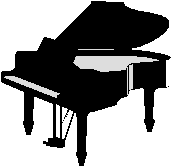
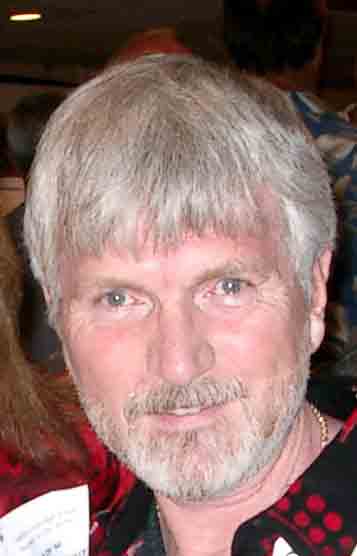
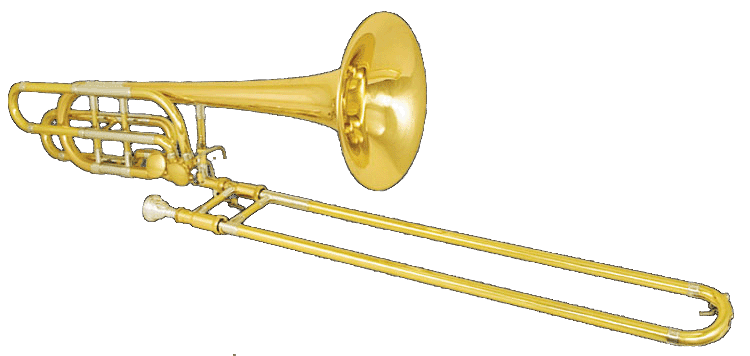
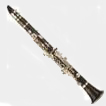
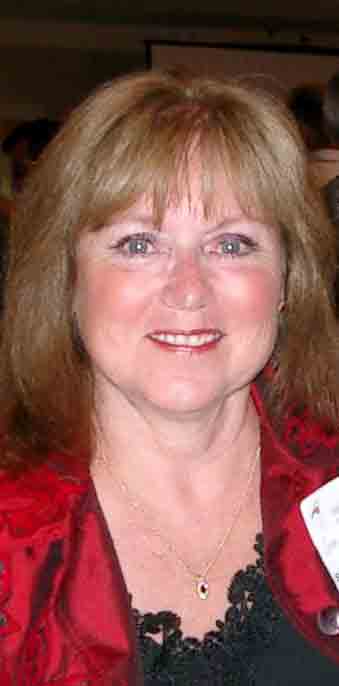
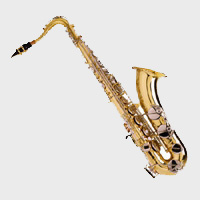
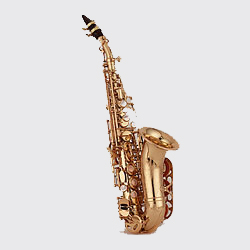
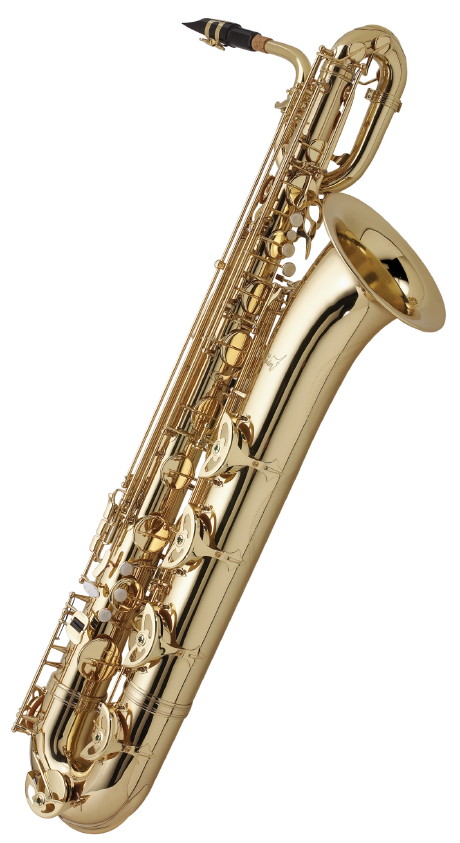



![]()





"Conn & King Musical Instrument Serial Number Info"
This list is not correct for Conn saxophones (see Conn Woodwind Serial Numbers) or Conn bugles (see Pan American Brass Serial Numbers). See Conn Reed Instrument List at Bottom of Page, or Click Return To Link Page , with additional Page on This Web Site.
Some instruments, mostly from the 1920's, have either a star ("*") or the letter "B" stamped near the serial number. Current thinking is that these marks indicate a non-standard alloy, probably only of the bell. The suspicion is that a star indicates a gold brass bell (higher copper content), while a "B" indicates a "French brass" bell. None of this is confirmed at the moment (July 2009). Serial numbers with a "V" engraved after the serial number are factory seconds.
Conn Brass Serial Number List
Serial Number Year Manufactured 1 1876 700 1877 1700 1878 3000 1879 5000 1880 6000 1881 7000 1882 8000 1883 9000 1884 10500 1885 12000 1886 13000 1887 14000 1888 16500 1889 18000 1890 20000 1891 22500 1892 25000 1893 27500 1894 29000 1895 34000 1896 40000 1897 46700 1898 52000 1899 58000 1900 66700 1901 71000 1902 76000 1903 82000 1904 88000 1905 94000 1906 100000 1907 106000 1908 111000 1909 116000 1910 121000 1911 126000 1912 130150 1913 132400 1914 137000 1915 142575 1916 146600 1917 155000 1918 165900 1919 169500 1920 175500 1921 190450 1922 198475 1923 206700 1924 219850 1925 230900 1926 239500 1927 252900 1928 263200 1929 273700 1930 280130 1931 281360 1932 289743 1933 294687 1934 300690 1935 307996 1936 315575 1937 322650 1938 324859 1939 327850 1940 338500 1941 348150 1942 354600 1943 355500 1944 355750 1945 355850 1946 366650 1947 376100 1948 383650 1949 389600 1950 393301 1951 396300 1952 420057 1953 427301 1954 500001 1955 571850 1956 652002 1957 718626 1958 779657 1959 834200 1960 898556 1961 949465 1962 C00501 1963 C73854 1964 E54106 1965 H31247 1966 K35274 1967 L20454 1968 M00000 1969 N00000 1970 P00000 1971 R00000 1972 GA300000 1973 GA400000 1974 GA500000 1975 GA600000 1976 GA700000 1977 GA800000 1978 GA900000 1979 HA000000 1980 HA165000 1981 HA23431 1982 HA33389 1983 HA45522 1984 HA58992 1985 HA68842 1986 HA76618,
37 0000011987 38 000001 1988 39 000001 1989 40 000001 1990 41 000001 1991 42 000001 1992 43 000001 1993 44 000001 1994 45 000001 1995 5 000001
2000
Research Notes on Age Identifiers, January 2012
Note: From 1987 on, the two-digit prefix number plus 50 will give you the year of manufacture on all Conn products. Also, the serial numbers from 1981 - 1987 for the Brasswinds are for student trumpets and cornets only. Data for the years 1967 to March 1974 is rather sketchy, for it was around that period of time that the Conn Brasswinds were being manufactured in Abilene, TX. Instruments made during that period are not likely to be their best examples, as the workers were still relatively new at the manufacturing process. In March of 1974 an alpha-numeric system was established, where the first character (letter) of a serial number indicated the decade; "G" for the 1970's, "H" for the 1980's, etc. The second character, also a letter, indicates the month of the year; "A" for January, "B" for February, "C" for March, "D" for April, "E" for May, "F" for June, "G" for July, "H" for August, "I" for September, "J" for October, "K" for November, and "L" for December. The third character (a number) indicates the number of year within the decade (indicated earlier by the first letter). The fourth character (number) indicates the specific type of instrument: "1" = Cornet, "2" = Trumpet, "3" = Alto Horn, "4" = French Horn, "5" = Mellophone, "6" = Valve Trombone, "7" = Slide Trombone, "8" = Baritone Horn & Euphonium, "9" = Tuba, and "10" = Sousaphone. The remaining four numbers of the serial number indicate the production number of the instrument on a monthly basis.
Please, Use the above information for your own guidance and do search further as the Conn Information due to the varying locations and rebirth and regeneration of the Ownership has created a sketchy at best group of resources containing Serial number information, Dates of Proposed Manufacture, Location of Manufacture, and all this set in the arena where it is necessary to further question to accurately determine the date and location of Manufacture with further qualifiers and questions such as "Is this a cup mouthpiece instrument, Is this cup Mouthpiece Instrument Reed or Brasswind, and then further determine Text on the Bell or further Engraving to determine if the instrument Artwork or Engraving Notation is Consistent to Elkhart, Texas, Arizona, Timeline and Model of Instrument Manufacture at that Specific Time, Such as the Trombones which at Various Times May Contain the Delineation as "Artist" or "Symphony", or "Elkhart", All of which Engraving and Artwork are Time Specific Exclusive to a Limited Time of Manufacture and Specific Locations in that Time Frame of Limited Periods of Manufacture During The Specific Decade of Manufacture for Which The Engraving or Numbering System was Used. Confused Yet? Well Welcome to The Art of Making Music In The Climate of Corporate Finance Where The Musicians Whom First Made Instrument They All Loved To Experience And Play Have Long Ago Past On. So; Don't Rely Exclusively on this or any other list of Conn Research Data, But Take What I have Given You, Make Notes, Compare with the Notes of Others, Look at Your Instrument or Photos of the Instrument in Question, Then Ask The follow Up Questions of the Seller, Get the Proper follow Up Photos to Show the Identifiers You Need To Determine You Location And Date Of Manufacture, And You Will Know The Accurate Age Of your Instrument, All the Data is Here. It's Just Complicated, and No One Can Do The Research For You or Your Specific Instrument of Interest.
Having Said All of the Above. The time and dates, Above and Below; Serial Numbers, Date of Manufacture, along with any other delineation or notation, or reference listed on this page are accurate to the best of our current knowledge as of January 2012, and I have no knowledge that there are an inconsistencies or inaccuracies listed or published on this reference page.
Cup Mouthpiece Instruments
1876 - 1900
Date Serial #
1876 1
1877 700
1878 1,700
1879 3,000
1880 5,000
1881 6,000
1882 7,000
1883 8,000
1884 9,000
1885 10,500
1886 12,000
1887 13,000
1888 14,000
1889 16,500
1890 18,000
1891 20,000
1892 22,500
1893 25,000
1894 27,500
1895 29,000
1896 34,000
1897 40,000
1898 46,700
1899 52,000
1900 58,000
Cup Mouthpiece Instruments
1901 - 1930
Date Serial #
1901 66,700
1902 71,000
1903 76,000
1904 82,000
1905 88,000
1906 94,000
1907 100,000
1908 106,000
1909 111,000
1910 116,000
1911 121,000
1912 126,000
1913 130,150
1914 132,400
1915 137,000
1916 142,575
1917 146,600
1918 155,000
1919 165,900
1920 169,500
1921 175,500
1922 190,450
1923 198,475
1924 206,700
1925 219,850
1926 230,900
1927 239,500
1928 252,900
1929 263,200
1930 273,700
Cup Mouthpiece Instruments
1931 - 1956
Date Serial #
1931 280,130
1932 281,360
1933 289,743
1934 294,687
1935 300,690
1936 307,996
1937 315,575
1938 322,650
1939 324,859
1940 327,850
1941 338,500
1942 348,150
1943 354,600
1944 355,500
1945 355,750
1946 355,850
1947 366,650
1948 376,100
1949 383,650
1950 389,600
1951 396,300
1952 393,301
1953 420,057
1954 427,301
1955 500,001
1956 571,850
Reed Mouthpiece Instruments 1895 - 1925
Date Serial #
1895 1
1896 2,000
1897 2,500
1898 3,000
1899 3,500
1900 3,900
1901 4,400
1902 5,100
1903 6,700
1904 8,500
1905 9,600
1906 10,800
1907 12,000
1908 13,000
1909 15,400
1910 17,800
1911 21,200
1912 22,500
1913 25,000
1914 30,000
1916 35,000
1917 40,000
1919 50,000
1920 58,000
1921 64,000
1922 83,000
1923 101,775
1924 124,600
1925 145,400
Reed Mouthpiece Instruments 1926 - 1956
Date Serial #
1926 167,900
1927 193,450
1928 209,250
1929 224,600
1930 237,800
1931 244,700
1932 249,230
1933 256,501
1934 260,000
1935 263,500
1936 271,000
1937 278,000
1938 284,000
1939 285,000
1940 288,300
1941 295,250
1942 304,500
1943 309,250
1944 309,300
1945 310,200
1946 314,000
1947 320,000
1948 327,150
1949 332,150
1950 337,250
1951 341,850
1952 341,851
1953 354,742
1954 359,251
1955 500,001
1956 571,750
Conn Cup Mouthpiece and Reed Mouthpiece Instruments
1957 - 1972
Date Serial #
1957 652002
1958 718626
1959 779657
1960 834200
1961 898556
1962 949465
1963 c00501
1964 c73854
1965 e54106
1966 h31247
1967 k35274
1968 l20454
1969 "m" prefix
1970 "n" prefix
1971 "p" prefix
1972 "r" prefix
Conn Cup Mouthpiece Instruments
1973 - present
Date Serial #
1973 ga30000
1974 ga40000
1975 ga50000
1977 ga60000
1978 ga70000
1979 ga80000
1980 *
1981 *
1982 16500 - 23430*
1983 23431 - 33388*
1984 33389 - 45521*
1985 45522 - 58991*
58992 – 68841*
1987 68842 – 76617* & prefix "37"
1988 76618 – 81115* & prefix "38"
1989 prefix "39"
1990 prefix "40"
Note: From 1987 to present, add 50 to the serial number prefix to calculate the year of manufacture.
C. G. Conn Saxophones
1976 - present
Date Serial #
1976 83000 - 89496
1977 91314 - 98992
1978 98993 - 111820
1979 111821 - 128691
1980 128692 - 145001
1981 145002 - 154753
1982 154954 - 170073
1983 170074 - 184336
1984 184337 - 201207
1985 201208 - 221243
1986 221244 - 240141
1987 240142 - 261465
1988 261466 - 273178
3811713 - 3821881
1989 3900000
1990 4000000
1991 4100000
Note: From 1987 to present, add 50 to the serial number prefix to
calculate the year of manufacture.
*1980 - 1986 serial numbers are for student trumpet and cornets only.
Other cup mouthpiece serial numbers are not available at this time.
Note: From 1974 to Present - The prefix number plus 50 will give you the
date manufactured
Example: Serial# 24-58637 = 24 + 50 = 1974
C.G. Conn, the oldest continuous manufacturer of band instruments in America, literally gave birth to the U.S. band instrument manufacturing industry. Today, C.G. Conn encompasses some of the greatest names in musical instruments - C.G. Conn, King and Benge brass instruments, Artley and Armstrong woodwinds and Scherl & Roth strings. Always committed to serving the needs of students, music educators, amateurs, and professionals, C.G. Conn's storied history reflects a dedication for innovation and quest for the ultimate in design and craftsmanship - an industry leader in musical performance.
One Saturday night in 1873, Civil War veteran Charles Gerard Conn got involved in a brawl that resulted in a split lip. Not good news for a man who played cornet with the Elkhart, Indiana "Brick Brown Band." In order to get around this problem, Colonel Conn set out to perfect a special rubber-cushioned mouthpiece so he could continue playing. The new mouthpiece, which he later patented, caught the eye of other musicians. He made a few for his friends, but soon there was such a demand for his mouthpieces that he rigged up a lathe from an old sewing machine and began turning them out as fast as possible.
In 1875, a French musical instrument maker named Dupont stopped by the shop and asked if he might use Conn's bench to repair some horns. After watching him work for several days, Conn decided that he, too, could make a horn. In that same year, in a closet-size shop only 20 feet square, Col. Conn produced the first American-built cornet.
By 1879 the shop moved into larger quarters, and Conn began adding instruments to his line. In 1888, Colonel Conn brought 15 European instrument craftsmen to the United States and gave them the space, the tools and the incentive to make the finest instruments their skills would allow. Their expertise, teamed with the Colonel's ingenuity and ambition, soon produced instruments so exceptional that they were accorded highest honors in the 1893 World's Columbia Exposition in Chicago.
Twice the Conn plant burned to the ground. Twice it was rebuilt, bigger and better than before. Famous bandmasters and musicians visited the plant and personally endorsed "Conn Wonder Instruments." John Phillip Sousa, Patrick Gilmore, Herbert Clarke, Arthur Pryor, A. Liberati and others were frequent visitors.
Vaudeville was at its peak, and the theaters and music halls of Elkhart saw a steady procession of the finest bands and musicians of the day. All played the Colonel's instruments. Conn instruments - ornate and often jeweled - became world famous as Sousa and others toured Europe playing before kings, queens and czars.
The Colonel also loved strange and bizarre instruments. In 1907 he built an Immensaphone, the largest horn in the world. It measured 12 feet in diameter and 35 feet long. The Conn factory also built the world's largest drum, a slide tuba to make noises like a ship's warning whistle, tenor tubas for the jackass role in Strauss' Don Juan, and a saxophone for one-armed musician Al Miller.
Since the first American cornet in 1875, C.G. Conn continued producing "firsts" throughout its distinguished history: the first American saxophone, first double-bell euphonium, first sousaphone (built to the great Sousa's specifications), and a long list of many others.
In 1915, Colonel Conn sold the C.G. Conn Company to C.D. Greenleaf. Greenleaf, almost clairvoyantly, realized a need for the advancement of instrumental music in the schools. His foresight and energy continued to add to Conn's innovations. He was responsible for founding the first national school for band directors, first and only center for the study of musical acoustics, first successful short action valves, first all-electronic organ and first fiberglass sousaphones, among other legendary advancements.
During World War II the Conn factory was completely converted to manufacture precision instruments for defense. Conn received four Army-Navy "E" Awards - the first given in the band instrument industry. During the Korean War part of the facilities was converted to defense production, and Conn achieved another record in precision manufacturing.
Many of today's most preferred instruments owe their original success to Conn's innovation. C.G. Conn French horns, for example, have been the horn of choice for the Hollywood film industry for most of the 20th Century. C.G. Conn Symphony Series trombones have a legendary place in the classical trombone world. Today's best trumpet players are discovering the break-through performance with Vintage One trumpets. These innovative designs, enhanced by superior craftsmanship and technological breakthroughs, have provided today's musicians with the superior instrument performance.
Click Here For Link Page To Photos of The Conn Musical Instrument Factory; circa 1911.
Date |
Serial Number |
1893-1899 |
1-4,000 |
1900-1903 |
4,001-6,000 |
1904-1905 |
6,001-9,000 |
1905-1910 |
9,001-25,000 |
1910-1915 |
25,001-40,000 |
1915-1925 |
40,001-78,000 |
1925-1930 |
78,001-126,000 |
1930-1935 |
126,001-176,000 |
1935-1936 |
176,001-186,000 |
1936-1937 |
186,001-200,000 |
1937-1938 |
200,001-212,000 |
1938-1939 |
212,001-225,000 |
1939-1940 |
225,001-239,000 |
1940-1941 |
239,001-254,000 |
1941-1942 |
254,001-264,000 |
1942-1945 |
264,001-267,500 |
1945-1946 |
267,501-277,000 |
1946-1947 |
277,001-287,000 |
1947-1948 |
287,001-296,500 |
1948-1949 |
296,501-301,500 |
1949-1950 |
301,501-308,000 |
1950-1951 |
308,001-316,500 |
1951-1952 |
316,501-322,000 |
1952-1953 |
322,001-330,000 |
1953-1954 |
330,001-337,000 |
1954-1955 |
337,001-340,000 |
1955-1960 |
340,001-370,000 |
1960-1965 |
370,000-406,500 |
1965-1970 |
406,501-457,600 |
King String Bass Serial Numbers |
American Standard String Bass Serial Numbers |
1934 001
|
1936 001
|
Date |
Serial Number |
1919-1930 |
1-10,000 |
1930-1935 |
10,000-30,000 |
1935-1940 |
30,000-40,000 |
1940-1945 |
40,000-45,000 |
1945-1950 |
45,000-50,000 |
1950-1955 |
50,000-65,000 |
1955-1960 |
65,000-100,000 |
1960-1965 |
100,000-160,000 |
1965-1970 |
160,000-420,000 |